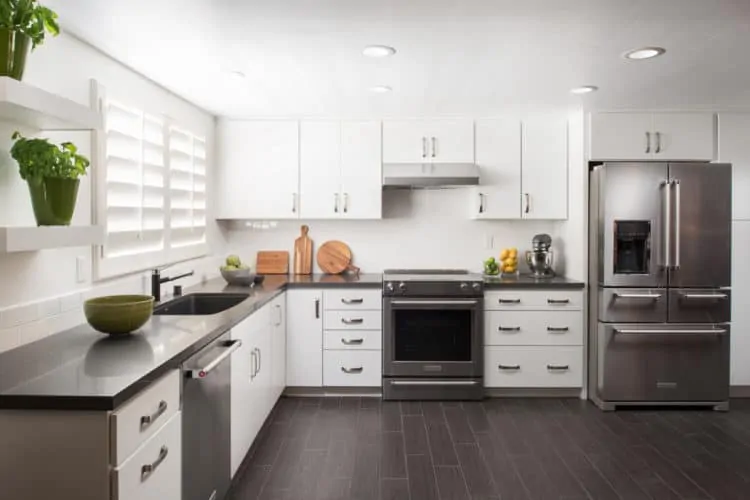
How New Trade Tariffs Can Affect Your House Construction Cost
By now you’ve likely heard that we are in a bit of a trade war with China.
President Trump has put massive tariffs on goods that come from China not once, but now twice, escalating an already tense situation, and taking advantage of the situation while the American economy is on the upswing, and China is embroiled in a bit of a downturn. While these tariffs have had a profound effect on a myriad of industries that rely on imported goods, it has particularly impacted the residential construction industry, as the new tariffs on construction materials have caused construction costs to skyrocket in 2018.
If you’re hoping to build a home or plan a remodel, the new tariffs will likely have an effect on your house construction costs. In this post, we’re going to take a look at how these tariffs could affect the average cost of building a house.
The Original Tariffs
The construction industry is no stranger to import taxes on goods.
Back on March 8, 2018, President Trump signed an order that placed a 25 percent tariff on imported steel and a 10 percent tariff on imported aluminum. This tariff went into effect on March 23rd.
This tariff put the U.S. housing industry in a state of panic, as steel and aluminum are materials that are often used in housing projects. Several trade associations, including the National Association of Homebuilders, spoke out against the tariffs.
“This announcement by the president could not have come at a worse time,” said Randy Noel, chairman of the National Association of Home Builders (NAHB) and a home builder and real-estate developer in Louisiana. “Tariffs hurt consumers and harm housing affordability.”
And he wasn’t wrong. The costs for goods went up for the NAHB members, and in turn raised prices for homebuyers.
A year before those tariffs, President Trump put import taxes on five Canadian lumber companies that ranged between three and 24 percent. These tariffs were in retaliation for Canada’s move to restrict the import of U.S. dairy products. Since then, lumber prices have gone up 31 percent. These more recent tariffs added higher costs for steel to the construction cost mix.
Combined, this unfortunately led to cities being unable to meet demand for housing, leading to a shortage of affordable housing in several major cities. New residential construction also reached a 10-year high last year. Given that those building a home are using wood from Canada that has up to 20 percent tariffs in addition to elevated prices for other materials, it is creating a difficult market to build new homes.
While the March 2018 tariff on steel had more effect on commercial builds than residential buildings, the latest tariffs against China could become more of an issue for construction companies and those who wish to build a new home.
The New Tariffs On Goods Coming from China
In mid-September, President Trump announced that the U.S. would place an additional $200 billion in tariffs on Chinese goods and would tax all imports. This was in addition to $50 billion worth of goods Trump already taxed earlier in the year. This means roughly half of all Chinese imports into the U.S. will face import taxes.
The first found of tariffs had a minimal impact on American consumers, but this latest wave of tariffs, which were intended to hurt China, may actually impact American consumers, specifically home buyers. Prices on building materials and housewares could be on the rise.
While home renovation demand continues to soar, the building costs associated with the projects are rising along with it, thanks to these new tariffs. According to the National Association of Home Builders, this new round of tariffs will include around $10 billion worth of Chinese products that are exclusive to the homebuilding and remodeling sector. The tariff will start at 10 percent, but could rise to as much as 25 percent by the end of the year. This would amount to a $2.5 billion tax increase on the home building and remodeling industry alone.
The tax would also cause construction material price increases, which will be tacked onto the price of a home build or home remodel.
The Tariff Impact on House Construction
Even if the tariffs have a minimal effect on housing, homebuilders will face other pressures.
Land and labor costs continue to rise, creating barriers to new construction. The affordable housing shortage has also created fierce competition among homebuyers in many cities, leading many to become embroiled in bidding wars on houses they have never even seen. Mortgage rates are also rising, showing that even a minor hike in home prices because of tariffs will have a trickle-down effect.
Raised Prices on Construction Materials
Several massive companies, such as Walmart, Gap, Coca-Cola, and General Motors have made announcements that these tariffs would force them to raise prices. The tariffs will also affect certain construction materials, which will cause the overall price on houses to rise in price, on top of the estimated $9,000 already added to a single family home by the Canadian lumber tariffs.
For home builds and remodeling projects, these tariffs are even forcing contractors to add in escalation clauses for projects that are being scheduled for next year, because they don’t know how high prices are going to rise. Home values have risen in recent years, which has given homeowners the cash to improve their investment by renovating their home through a general contractor.
This estimate spike in prices and potential for more to come has caused homeowners to want their projects done faster, before any escalation clauses can increase their budget. The tariffs are therefore putting pressure on the industry to work quickly and find other means of cutting building costs to remain within budget.
Adding to the tariffs on Canadian lumber, imported steel and aluminum, this new round of tariffs on Chinese goods will include wall material, floorboards, light fixtures, cabinets and counterops, heating and cooling equipment, tile for bathrooms and backsplashes, and more. Most mosaic, glass and patterned tile are not made in the U.S., as well as the cost of ceramic, natural stone, glass materials, and more. Industry experts estimate that import duties on these items will go up at least 15 to 20 percent, which will in turn force costs on them all to follow suit.
Quartz & Other Materials
Materials like marble, granite, and especially quartz used for countertops will also be impacted by the tariffs. In fact, the U.S. Commerce Department recently announced its findings in an investigation over illegal dumping of Chinese quartz into the U.S. It found “that exporters received countervailable subsidies ranging from 34.38 to 178.45 percent, according to a press release. Because of this finding, the U.S. Commerce Department will impose duties on the course on top of the new tariffs.
Just last year, the U.S. imported $460 million worth of quartz surface products from China. The price of quartz has actually already gone up in anticipation of these imposed duties and will get worse with the pending tariffs. This move will benefit U.S. quartz marker Cambria, which actually filed the complaint to the Commerce Department, however other companies will struggle to match the color and quality of the stone and meet demand. For many, the prices will simply be too high.
Chinese tile is cheaper than domestically-produced tile, so the hope is that the tariffs will level the playing field for U.S. tile makers in the “America first” economy. However, this will still raise prices for consumers.
Lumber & Steel Tariffs Add to Costs
The trade war between the U.S. and China has had some negative effect on several other industries, including the hard-hit farmers in the agriculture industry, business investments, and fading tax gains. Of course, our point of concern here is higher housing costs.
While vehicles may cost thousands more with the tariffs on steel, housing costs are harder to pinpoint. What is known is that the combined tariffs on everything from building materials to appliances will increase the overall cost of new homes. The true impact of this tariff won’t be seen until the next wave of home construction begins next year, when builders will be forced to pay for the higher material costs of Canadian lumber for construction jobs that are already contracted.
The steel and aluminum tariffs will affect new home prices if the cost of those materials increases within the U.S. This effect will be more muted, since homes are typically built more with wood than metal. Lumber accounts for one-third of the average cost of building a new home, while steel and aluminum contribute just 0.5 percent to one percent of the home’s total cost.
With the new and existing tariffs, apartment buildings and condos will feel the hurt the most because they require significantly more steel than single-family homes. Unfortunately, these material costs may have to be absorbed by buyers and renters.
Tariffs Come at a Time When There is Increased Demand for Housing
Adding to the difficult situation is the fact that home-building activity had picked up in the months before the tariffs were announced. With contracts already begun, construction companies have to move forward and pay the higher prices for materials. Making the actual cost of construction higher will make it more difficult for companies to offer affordable price points.
The lumber tariffs on Canada have had a bigger impact than tariffs on steel and other goods from China. When the Department of Commerce imposed a 20.83 percent tariff on shipments of softwood lumber from Canada last November, the move was intended to create new jobs and spur domestic lumber production. What it also did was cause the price of lumber to increase nearly 15 percent, costs which have largely been passed on to home buyers.
This tariff added an average of $6,000 to $10,000 to the total cost of a median-priced home. In response to the tariffs, the Canadian lumber duty was projected to reduce investment in single-family structures by $1.1 billion. If this reduction were to actually occur, new home building would slow because there might not be enough lumber available, or because of prices being too high.
Summary
Overall, the tariffs aim to strengthen the American economy by forcing construction companies to use American goods rather than foreign imports, however this has also raised the actual cost of building a house. This may cause new home construction to plummet in the coming year and fewer renovation projects like kitchen and bathroom remodels as well, but it remains to be seen.
Sources:
https://www.businessinsider.com/donald-trump-tariff-impact-on-housing-and-construction-2018-3
https://www.nytimes.com/2018/09/17/us/politics/trump-china-tariffs-trade.html
https://www.cnbc.com/2018/09/24/new-chinese-tariffs-make-home-renovations-more-expensive.html
https://www.nytimes.com/2018/06/11/business/dealbook/trump-tariffs-canada-lumber.html











